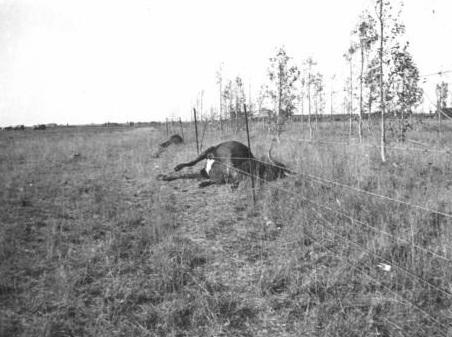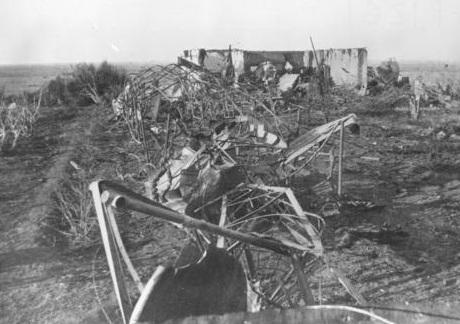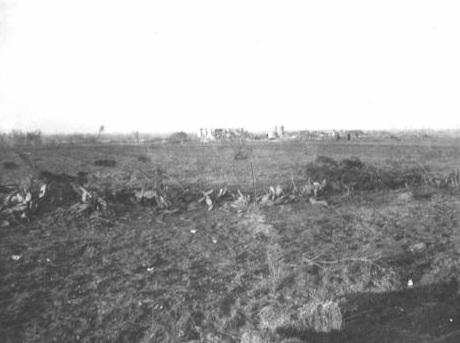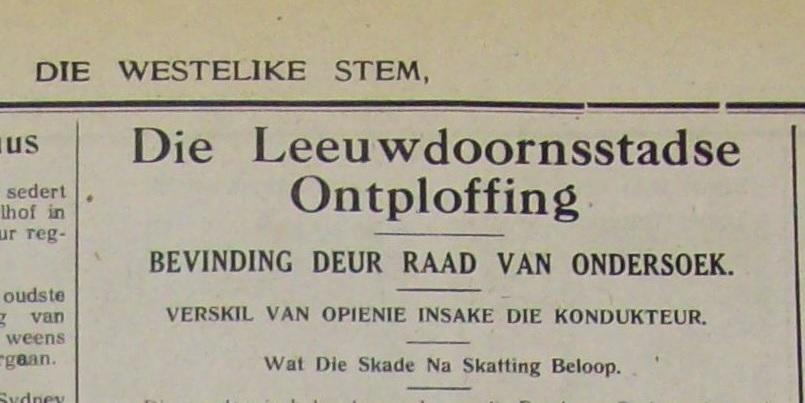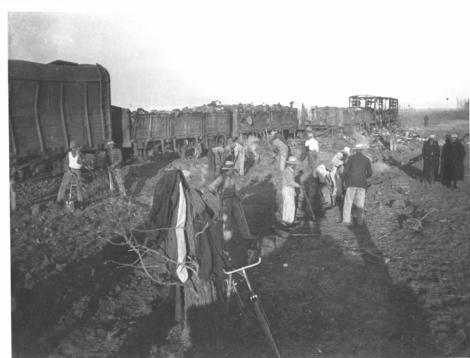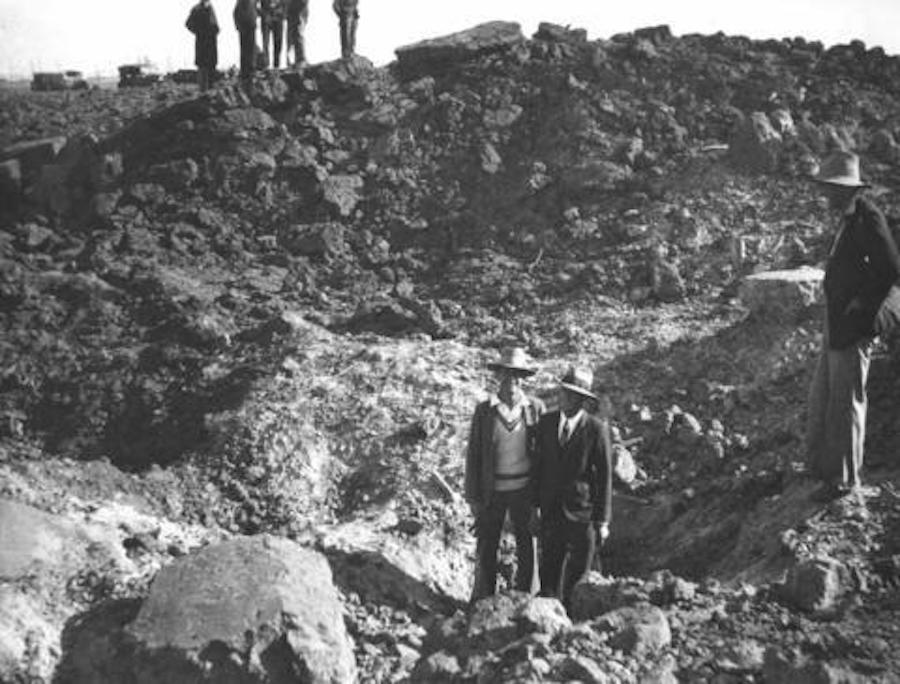
Disclaimer: Any views expressed by individuals and organisations are their own and do not in any way represent the views of The Heritage Portal. If you find any mistakes or historical inaccuracies, please contact the editor.
This story is not about Potchefstroom history, but it is worth telling. It is about one of the largest explosions that occurred in South Africa and it was on 17 July 1932 at Leeudoringstad. The tenuous connection with Potchefstroom is that a report on the conclusions of the board of enquiry on the explosion appeared in Die Westelike Stem on 2 November 1932. At the time Leeudoringstad was also still part of the larger Potchefstroom district.
The town Leeudoringstad was founded in 1920 and named after the railway halt that was already there. Today it is part of the Maquassi Hills Local Municipality, which also includes Wolmaransstad and Makwassie.
The explosion of 320 tons of dynamite, loaded onto 30 railway cars, was so huge that it is one of only two explosions in South Africa that feature in a Wikipedia article named “Largest artificial non-nuclear explosions”. The other is the Braamfontein explosion of 19 February 1896 when 60 tons of blasting gelatine exploded at that station after the train wagons stood for three days in scorching sunlight.
The South African Railways immediately sent a photographer to the scene and some of the photos taken are now in the Transnet Digital Library. This is one of those photos and shows some of the twisted metal after the explosion.
Lionel Wulfsohn, in his samilitaryhistory.org article, with the title 'Piet Botha – A South African Patriot', mentioned the explosion. He quoted The Star newspaper of 18 July 1932;
A vast hole 200 m in length, resembled nothing so much as a shell-swept trench in Flanders, indescribable desolation for an area a kilometre square, wrecked houses, dead and dying animals, twisted metals, branchless tree stumps and the ruins of half a dozen smoking trucks bearing tragic witness to the terrific dynamite explosion which at 17:45 yesterday evening brought suffering untold to the small community of Leeudoringstad in the south-western Transvaal.
One of the numerous dead livestock that were killed in the explosion (Transnet Digital Library)
The author of the website ruralexploration.co.za quoted AP Cartwright from his book The Dynamite Company:
It was a goods train delivering explosives from the Cape Explosives Factory (in Somerset West) to the Rand, there were thirty-one trucks loaded with 10685 cases. Just outside the station, about 1 km down the track, the driver noticed a cloud of smoke coming from one of the trucks in the middle of the train. He immediately stopped the train and was about to get down from the foot plate when an almighty explosion occurred, well actually a succession of explosions as each truck in turn got blasted.
Miraculously the driver and his fireman escaped unharmed and managed to uncouple the engine and take it into the station to warn the people there that there could possibly be more explosions. The guardsman, Sarel van Wyk, was not so lucky and he was blown to pieces.
A nearby farm house received the full blast and four people in there were killed instantly as well as most of the livestock.
The board of inquiry found that the initial fire was due to the trailing axle of the first dynamite truck that had become hot and ignited the grease and oil in the axle box. And what saved the driver and fireman was that by regulation there had to be three empty trucks between the engine and the first explosives truck.
One of the structures heavily damaged by the blast. Four of the five people killed was in a nearby farmhouse. (Transnet Digital Library)
Wulfsohn wrote that Lance Sergeant Piet Botha, who was in command of the Leeudoringstad police station, was the first on the scene of the explosion:
The engine crew warned Piet that more trucks of dynamite might explode at any moment. Half choked by the smoke fumes and dust caused by the explosion, and with the utmost disregard for his own safety, Piet kept on searching for victims who were believed to be buried amongst the debris of the train and adjoining farmhouses.
The casualty list was comparatively light, i.e., five killed and 11 injured, and this can be explained by the fact that the area was very sparsely populated.
The proximity of the site of the explosion to the town of Leeudoringstad is visible from this photo. One report said that it took place about one kilometre west of the station. This brings it in the vicinity of the current location of the Leeudoringstad silos. (Transnet Digital Library)
The article in Die Westelike Stem reported on the conclusions of the board of enquiry. It noted:
- That the explosives transported on the train was of normal quality and properly packed.
- That the train was examined at Beaconsfield and was found in a normal state.
- That between Bloemhof and Boskuil stations the rear axle of one of the trucks on the side of the fireman heated up and caused oil in the axle box to catch fire. The oil burned until shortly after the train left Stonegate.
- About “168 miles (270 km) from Germiston” the rear wheels of the first dynamite wagon derailed. (Leeudoringstad, by road is 243 km from Germiston).
- Due to the derailment, the derailed wheels and/or the warm end of the axle, pierced the floor of the wagon carrying the dynamite and caused enough heat to cause the explosion.
The heading of the article in Die Westelike Stem of 2 November 1932
Trucks loaded with debris from the explosion (Transnet Digital Library)
The report came to the conclusion, after listening to the evidence of eyewitnesses, that the conductor of the train, Sarel van Wyk – who passed away in the explosion – did not properly inspect the train at Bloemhof. However, an eyewitnesses saw the conductor at the last station before the explosion, Stonegate, and testified that he was not asleep. The report states the opinion, that even if the conductor became aware of the heated axle box, he would not have been able to inform the driver or fireman since the noise of the engine was too loud and he would not have been able to make himself heard.
The report noted the amount of damage. Damage to buildings, its content and land: £10 793; rolling material – i.e. the train: £9 532; goods on the train £22 087; the railway line, fences and telegraph: £809; railway buildings: £321; and repairs: £340, in total £43 882.
Main image: People in this photo give scale to the size of the hole made by the explosion (Transnet Digital Library)
This article first appeared on Lennie's blog on 6 June 2024. Click here to view.
About the author: Somewhere in her late teens Lennie realised that writing came easy to her and now, many decades later, she has written and co-written nine books on various aspects of the history of Potchefstroom. This is apart from various supplements and numerous articles, mostly published in the Potchefstroom Herald. Three of her books are available on amazon.com. One is a biography on Kenneth McArthur, Olympic gold medallist in the marathon of 1912. The other two are Afrikaans Christian novels. The supplement on the history of the Herald, at the time of its centenary in 2008, led to a Master’s degree in Communication Studies and one of the books, on NWU PUK Arts, led to a PhD in history. In the process of all this writing she has accumulated a large stash of information and photos on the history of Potchefstroom. Click here to read more articles on her website.
Sources:
- Lionel Wulfsohn, http://samilitaryhistory.org/vol082lw.html, Piet Botha – A South African Patriot, December 1989. Date of entry 2024-05-20.
- Anon. https://ruralexploration.co.za/Leeudoringstad.html, Date of entry 2024-05-20.
- Anon. Die Leeuwdoornstadse ontploffing, Die Westelike Stem, 1932-11-02.
Comments will load below. If for any reason none appear click here for some troubleshooting tips. If you would like to post a comment and need instructions click here.


